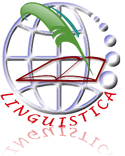WOMEN™S LANGUAGE AS THE MAIN CHARACTER IN JANE AUSTEN™S NOVEL: PRIDE AND PREJUDICE
DOI:
https://doi.org/10.24114/jalu.v2i1.713Abstract
ABSTRACT This study deals with women™s language analysis on the main character in JaneAusten™s novel: Pride and Prejudice. The objectives of the study are to describe the types of women™s linguistics features on the main character in JaneAusten™s novel Pride and Prejudice, to derive women™s linguistics features on the main character in JaneAusten™s novel Pride and Prejudice, to reason women™s linguistics features on the main character in JaneAusten™s novel Pride and Prejudice. The research was conducted by descriptive qualitative. Thedata are the speech on the main character in JaneAusten™s novel, the data were collected from 1 novel, Pride and Prejudice that has women™s linguistics features. The data were analyzed by identifying and classifying the figures of speech displaying the result in a table. Then these linguistics features are described in details. The analysis found that there are 9 types of women™s linguistics features which used: lexical hedges is amount 10,06%, tag question is 0,62%, rising intonation on declarative is 2,51%, empty adjective is 3,14%, precise color terms is 0%, intensifier is 56,60%, hyper correct grammar is 1,88%, super polite form is 0,62%, avoidance of swear word is 14,46%, and emphatic stress is 10,06%. The most dominant feature that used is intensifier and the lowest is precise color terms because it is not used in the data. Keywords: Linguistics, Sociolinguistics, Women™s LanguageDownloads
Issue
Section
Articles
License
Copyright (c) 1970 Murdianti Murdianti, Muhammad Natsir

This work is licensed under a Creative Commons Attribution-ShareAlike 4.0 International License.
Authors who publish with this journal agree to the following terms:
- Authors retain copyright and grant the journal the right of first publication with the work simultaneously licensed under a Creative Commons Attribution License that allows others to share the work with an acknowledgment of the work's authorship and initial publication in this journal.
- Authors are able to enter into separate, additional contractual arrangements for the non-exclusive distribution of the journal's published version of the work (e.g., post it to an institutional repository or publish it in a book), with an acknowledgment of its initial publication in this journal.
- Authors are permitted and encouraged to post their work online (e.g., in institutional repositories or on their website) prior to and during the submission process, as it can lead to productive exchanges, as well as earlier and greater citation of published work (See The Effect of Open Access).
- This work is licensed under a Creative Commons Attribution-ShareAlike 4.0 International License.

